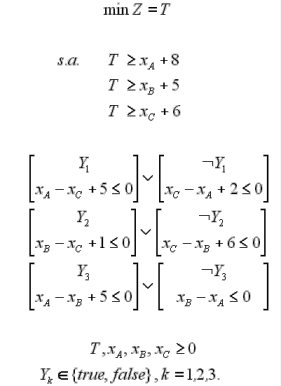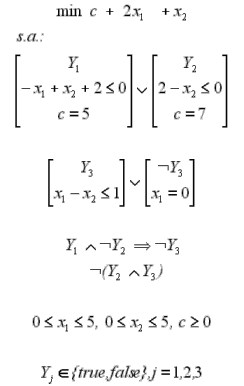
This example corresponds to a Jobshop (Jobshop scheduling) problem, having three jobs (A,B,C) that must be executed sequentially in three steps (1,2,3), but not all jobs require all the stages, meaning that the jobs will be executed in a subset of stages. The processing time for each stage is given by the following table:
| Job/stage | 1 | 2 | 3 |
| A | 5 | - | 3 |
| B | - | 3 | 2 |
| C | 2 | 4 | - |
The objective is to obtain the sequence of task, which minimizes the completion time T. In order to obtain a feasible solution the clashes between the jobs must be eliminated. For more details about this formulation see Raman & Grossmann (1994).
LogMIP input file for this example
